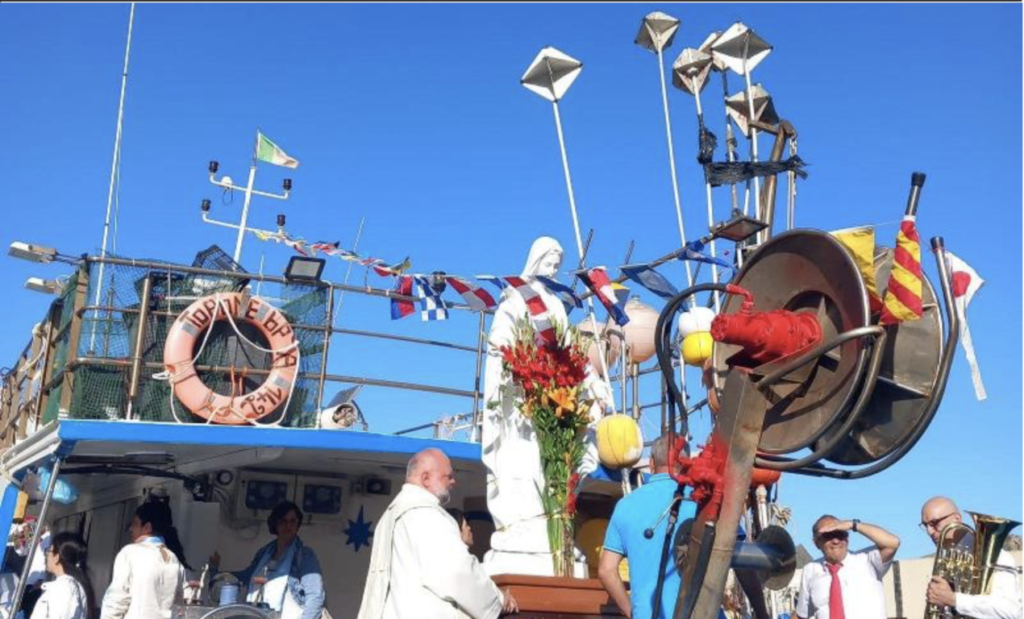Our Lady of the Fishermen (or “Stella Maris”) of Ustica
The celebration of the Madonna dei Pescatori, also known as Stella Maris, is celebrated on the last Sunday of May. It is a recent addition to the religious celebrations of Ustica, established at the request of the fishing community, which has always had a strong devotion to the Virgin Mary.
The event is entirely self-financed by the local fishermen, with each family contributing around 500 euros to cover the costs of the celebration.
It is interesting to observe the formation of a kind of ritual communitas built around the Virgin Mary. A cult founded by the fishermen, it marks the election of a protector specifically for this social category. There are two main ways to interpret the significance of this devotion. First, the Madonna of the Fishermen stands as a distinct figure within the ceremonial calendar, playing her own role — protector of the fishermen — within a context where a Patron Saint already exists, namely Saint Bartholomew. The latter, in a sense, represents the structural identity of a community that aligns itself around its sacred totem. In contrast, the cult of the Madonna dei Pescatori seems to generate a kind of “anti-structure.” The fact that the sea becomes the thematic and physical space of the celebration — serving as the medium through which the second phase of the ritual procession unfolds — highlights this anti-structural dimension, which breaks away from the earthbound, urban, or rural character of the other religious festivities.
The statue, made of white fiberglass, was commissioned and paid for by the fishermen themselves. It is normally placed in a flowerbed by the harbour, where it remains throughout the year as a symbolic guardian of those arriving and departing by sea.
Nine days before the feast, the statue is brought to the main church, San Ferdinando Re, where a novena is celebrated. On the day of the celebration, the procession departs from the church and heads to the harbour, where the statue is loaded onto a fishing boat. A sea procession then takes place: several boats follow the one carrying the statue, and a priest blesses the sea. The route includes traditional and symbolic stops, such as the Grotta del Tuono (Thunder Cave) and the Spalmatore Tower.
A band accompanies the event aboard a second boat. Once the procession returns to Cala Santa Maria, the harbour of Ustica, the feast continues with moments of conviviality, shared meals, and fireworks to conclude the celebration.
This element has been included in the Register of Intangible Heritage of local interest of the Municipality of Ustica, as part of Intervention 2 “Activation of the Observatory on the Intangible Cultural Heritage of the Territory through the application of the REIL methodology – Register of Intangible Heritage of Local Interest”, within the”Ustum Cultural Programme” project, funded by the NRRP (National Recovery and Resilience Plan), Mission: Digitalisation, innovation, competitiveness, culture and tourism, Component: Tourism and culture 4.0, Investment 2.1 “Attractiveness of villages.” CUP: E24H22000130006.


